Entry Database : PDB / ID : 1zzpTitle Solution structure of the F-actin binding domain of Bcr-Abl/c-Abl Proto-oncogene tyrosine-protein kinase ABL1 Keywords / / Function / homology Function Domain/homology Component
/ / / / / / / / / / / / / / / / / / / / / / / / / / / / / / / / / / / / / / / / / / / / / / / / / / / / / / / / / / / / / / / / / / / / / / / / / / / / / / / / / / / / / / / / / / / / / / / / / / / / / / / / / / / / / / / / / / / / / / / / / / / / / / / / / / / / / / / / / / / / / / / / / / Biological species Homo sapiens (human)Method Authors Hantschel, O. / Wiesner, S. / Guttler, T. / Mackereth, C.D. / Rix, L.L.R. / Mikes, Z. / Dehne, J. / Gorlich, D. / Sattler, M. / Superti-Furga, G. Journal : Mol.Cell / Year : 2005Title : Structural Basis for the Cytoskeletal Association of Bcr-Abl/c-Abl.Authors : Hantschel, O. / Wiesner, S. / Guttler, T. / Mackereth, C.D. / Rix, L.L.R. / Mikes, Z. / Dehne, J. / Gorlich, D. / Sattler, M. / Superti-Furga, G. History Deposition Jun 14, 2005 Deposition site / Processing site Revision 1.0 Aug 30, 2005 Provider / Type Revision 1.1 Apr 30, 2008 Group Revision 1.2 Jul 13, 2011 Group Revision 1.3 Mar 9, 2022 Group / Database references / Derived calculationsCategory database_2 / pdbx_nmr_software ... database_2 / pdbx_nmr_software / pdbx_struct_assembly / pdbx_struct_oper_list / struct_ref_seq_dif Item _database_2.pdbx_DOI / _database_2.pdbx_database_accession ... _database_2.pdbx_DOI / _database_2.pdbx_database_accession / _pdbx_nmr_software.name / _struct_ref_seq_dif.details Revision 1.4 May 22, 2024 Group / Category / chem_comp_bond
Show all Show less Remark 999 SEQUENCE Two additional C-terminal residues (LE) result from primer design.
 Yorodumi
Yorodumi Open data
Open data Basic information
Basic information Components
Components Keywords
Keywords Function and homology information
Function and homology information Homo sapiens (human)
Homo sapiens (human) Authors
Authors Citation
Citation Journal: Mol.Cell / Year: 2005
Journal: Mol.Cell / Year: 2005 Structure visualization
Structure visualization Molmil
Molmil Jmol/JSmol
Jmol/JSmol Downloads & links
Downloads & links Download
Download 1zzp.cif.gz
1zzp.cif.gz PDBx/mmCIF format
PDBx/mmCIF format pdb1zzp.ent.gz
pdb1zzp.ent.gz PDB format
PDB format 1zzp.json.gz
1zzp.json.gz PDBx/mmJSON format
PDBx/mmJSON format Other downloads
Other downloads 1zzp_validation.pdf.gz
1zzp_validation.pdf.gz wwPDB validaton report
wwPDB validaton report 1zzp_full_validation.pdf.gz
1zzp_full_validation.pdf.gz 1zzp_validation.xml.gz
1zzp_validation.xml.gz 1zzp_validation.cif.gz
1zzp_validation.cif.gz https://data.pdbj.org/pub/pdb/validation_reports/zz/1zzp
https://data.pdbj.org/pub/pdb/validation_reports/zz/1zzp ftp://data.pdbj.org/pub/pdb/validation_reports/zz/1zzp
ftp://data.pdbj.org/pub/pdb/validation_reports/zz/1zzp Links
Links Assembly
Assembly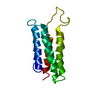
 Components
Components Homo sapiens (human) / Gene: ABL1, ABL, JTK7 / Plasmid: modified pET24d / Species (production host): Escherichia coli / Production host:
Homo sapiens (human) / Gene: ABL1, ABL, JTK7 / Plasmid: modified pET24d / Species (production host): Escherichia coli / Production host: 
 Sample preparation
Sample preparation Processing
Processing Movie
Movie Controller
Controller


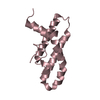



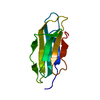
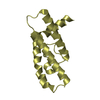
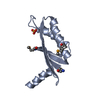
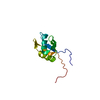
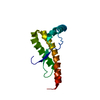
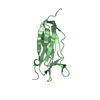
 PDBj
PDBj






 NMRPipe
NMRPipe